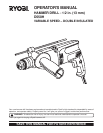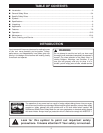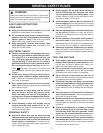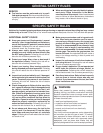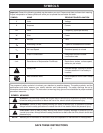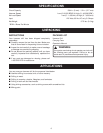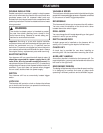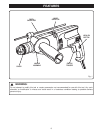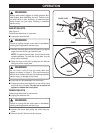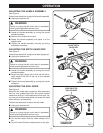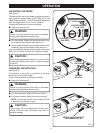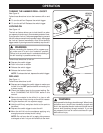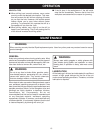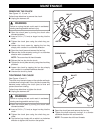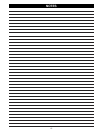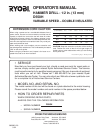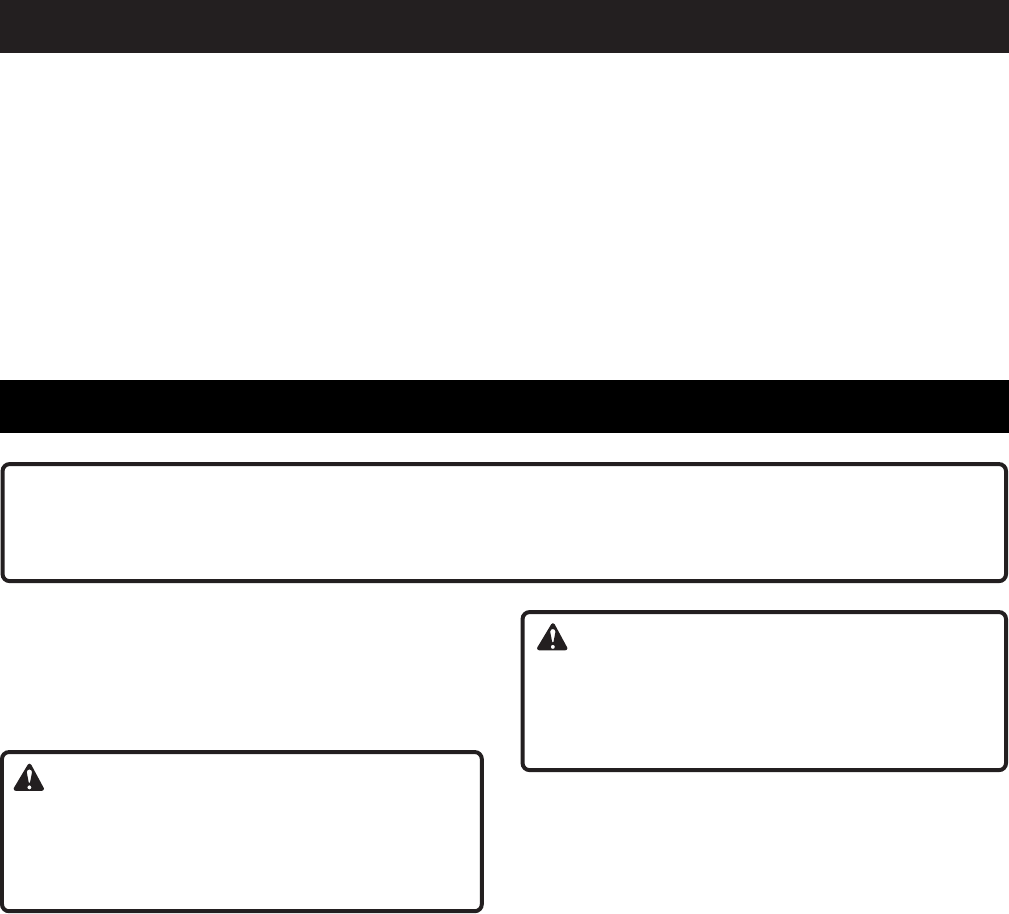
13
WARNING:
When servicing use only identical Ryobi replacement parts. Use of any other parts may create a hazard or cause
product damage.
GENERAL
Avoid using solvents when cleaning plastic parts. Most
plastics are susceptible to damage from various types of
commercial solvents and may be damaged by their use.
Use clean cloths to remove dirt, carbon dust, etc.
WARNING:
Do not at any time let brake fluids, gasoline, petro-
leum-based products, penetrating oils, etc. come in
contact with plastic parts. They contain chemicals
that can damage, weaken, or destroy plastic.
When electric tools are used on fiberglass boats, sports
cars, wallboard, spackling compounds, or plaster, it has
been found that they are subject to accelerated wear and
possible premature failure, as the fiberglass chips and
grindings are highly abrasive to bearings, brushes,
commutators, etc. Consequently, we do not
recommended that this tool be used for extended work
on any fiberglass material, wallboard, spackling
compounds, or plaster. If, however, you do work with any
of these materials, it is extremely important that the tool
is cleaned frequently by blowing with an air jet.
MAINTENANCE
WARNING:
Always wear safety goggles or safety glasses with
side shields during power tool operation or when
blowing dust. If operation is dusty, also wear a dust
mask.
LUBRICATION
All the bearings in this tool are lubricated with a sufficient
amount of high grade lubricant for the life of the unit
under normal operating conditions. Therefore, no further
lubrication is required.
OPERATION
HELPFUL TIPS
■ When drilling hard, smooth surfaces, use a center
punch to mark the desired hole location. This mea-
sure will prevent the drill bit from slipping off center
as you start the hole. However, the variable speed
feature allows you to start holes without center
punching. To accomplish this, operate the drill at a
low speed until you start the hole.
■ When drilling metals, use a light oil on the drill to
keep it from overheating. The oil will prolong the life
of the bit and increase the drilling action.
■ If the bit jams in the workpiece or if the drill stalls,
stop the tool immediately. Remove the bit from the
workpiece and determine the reason for jamming.



